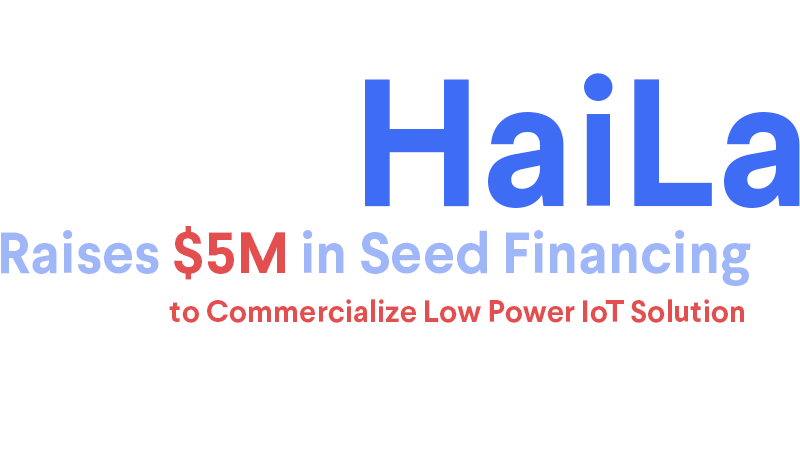Ten technologies for a post COVID-19 world

While confined to our homes, we in the technology scouting team at TandemLaunch are looking for solutions from researchers and inventors from around the world to help alleviate some of the hardships that have surfaced during this crisis. While a lot of good people are uniting to accelerate the development of a vaccine to COVID-19 and much needed equipment to support intensive care units, we have been searching for solutions that will address the persisting challenges facing us all as technology users. In this blog, we explore inventions add issues such as internet bandwidth constraints, data analysis, biometric tracking, remote work productivity and portable diagnostics. These challenges have always existed, but their relative importance may shift dramatically in a post-COVID-19 world. Innovation will see us through this crisis, and inventors the world over remain the key to solving our biggest problems.
1. Mapping the Landscape of Artificial Intelligence Applications Against COVID-19
AI solutions
Leaders in their industry have put together this overview of where AI could have an immediate impact on the current crisis caused by COVID-19. Amongst many, AI can provide help with medical imaging, tracking disease evolution with non-invasive methods, estimate molecular structure for drug identification, forecasting and modeling of the evolution of the disease and it’s impact, modeling and tracking the spread of misinformation about the disease and many more. The message here is that most of these applications are on the verge of being mature enough to have an immediate impact.
https://arxiv.org/pdf/2003.11336.pdf
Joseph Bullock, Durham University
Alexandra (Sasha) Luccioni, MILA, Université de Montréal
Katherine Hoffman Pham, NYU Stern School of Business
Cynthia Sin Nga Lam, WHO
Miguel Luengo-Oroz, United Nations Global Pulse
2. Delivery of High Definition Video Content over Bandwidth Constrained Links in Heterogeneous Wireless Networks
Bandwidth Management
This research from Dublin City University would help manage high bandwidth constraints put on video transfer by such platforms as YouTube and Zoom or Skype. Already used Adaptative Bitrate (ABR) algorithms work well if you are willing to sacrifice the quality of the video. If not, the buffering can be intolerable. This research proposes Adaptive Interface Selection (AIS) to address this issue. AIS leverages the multi-homed nature of modern mobile devices and the segmented nature of video content prepared for DASH-enabled clients to overcome the bandwidth constraints. This essentially uses all the available wireless interfaces available in a wireless device to download the content in parallel, effectively keeping quality video streaming while alleviating buffering.
https://ieeexplore.ieee.org/document/8971921
Gabriel-Miro Muntean, Dublin City University
3. Distilling the Essence of Raw Video to Reduce Memory Usage and Energy at Edge Devices
Bandwidth Management
Roughly 82% of internet traffic is due to video data. This research from Pennsylvania State University promises to optimize memory bandwidth and energy consumption of edge devices when streaming video. This two-pronged approach performs lossless compression of the video frames and then approximates video frame data, achieving a memory bandwidth reduction of more than 50% and an energy consumption reduction of more than 60%.
https://dl.acm.org/doi/10.1145/3352460.3358298
Chita R. Das, Pennsylvania State University
4. Non-Contact Vital Signs Monitoring Through Visible Light Sensing
Non-contact biometrics
A few interesting solutions can enable biometrics tracking such as heart rate and respiratory rate without contact with the patient or user. These can enable a safer work environment for health worker at very low cost. This first solution from Prof. Ekin uses visible-light sensing (VLS) and signal processing methods to track the chest movement of someone and extrapolate heart rate and respiratory rate. This VLS solution uses a low cost and low power IR LED and has a 94% accuracy just form the lab prototype.
https://ieeexplore.ieee.org/document/8935383
Sabit Ekin, Oklahoma State University
5. PalmNet: Gabor-PCA Convolutional Networks for Touchless Palmprint Recognition
Non-contact biometrics
Touchless biometric recognition will likely be in vogue to alleviate the risks of transmitting diseases in the future. It is possible to have high accuracy recognition of and individual by looking at his/her palm print and using machine learning signal processing methods. This method could identify someone without contact and without using their face which keeps their privacy. This works with heterogenous capture devices and procedures.
https://ieeexplore.ieee.org/abstract/document/8691498
Fabio Scotti, Università Degli Studi di Milano
6. eRevise: Using Natural Language Processing to Provide Formative
Remote work environment
The world has shifted suddenly towards working remotely. This includes students that must follow classes online in most cases. This research is a web-based, machine-learning driven writing and revising solution where students can receive meaningful feedback on their essays.
https://arxiv.org/abs/1908.01992
Rafael Quintana, University of Pittsburg
7. TastyFloats: A Contactless Food Delivery System
Remote work environment
In a post COVID-19 world, general hygiene practices will shift towards more distant and structured distribution. When it comes to tasting food, shared containers might be less appealing to the public. This Sussex based research suggests a contactless food delivery system that uses acoustic levitation to deliver morsels of food to a person’s mouth without having to touch anything.
https://dl.acm.org/doi/10.1145/3132272.3134123
Marianne Obrist, University of Sussex
8. ShapeShift: 2D Spatial Manipulation and Self-Actuation of Tabletop Shape Displays for Tangible and Haptic Interaction
Remote work environment
Remote work realities will bring forth the need for good haptic feedback solutions that adapt to the situation. Stanford based Sean Follmer has developed a 2D platform that changes its shape using concatenated solid pillars. This platform enables remote users to touch a recreated 2D surface topology in real-time. This solution is compact and achieves a haptic resolution of 7 mm.
https://dl.acm.org/doi/10.1145/3173574.3173865
Seam Follmer, Stanford University
9. Compact snapshot hyperspectral imaging with diffracted rotation
Portable Diagnostics
Another important aspect of this pandemic is enabling scientists, researchers and medical professionals to asses their environment quickly using edge devices. One clear solution for this is portable, user friendly hyperspectral imaging. This research from KAIST proposes a diffractive lens that can be put in front of any camera and can extract spectral information while keeping the photograph almost intact. This is possible with machine learning image reconstruction and a proprietary lens design. Having spectral information in the palm of your hand would enable the rapid scanning of surfaces for analytes that signal the presence of contamination.
https://dl.acm.org/doi/10.1145/3306346.3322946
Min H. Kim, KAIST
10. Mobile imaging platform for digital influenza virus counting
Portable Diagnostics
A clear need in this crisis is helping health workers diagnose and study compounds quickly with minimal need for equipment. This research showcases a smartphone-based imaging platform with a small form factor. Their device carries out a digital influenza counting that is 100 times more sensitive than any commercial rapid influenza test kit.
https://pubs.rsc.org/en/content/articlelanding/2019/LC/C9LC00370C#!divAbstract Hiroyuki Noji, University of Tokyo
This is a tiny cross section of technologies that we think might address our heavily impacted future. Of course, the challenge of bringing technologies to market persists, but there is hope in such times as they bring people together across domains with a common goal. If you’d like to discuss how we can help address your deep-technology innovation needs, contact us at info@tandemlaunch.com.
Stay safe, and stay home!


